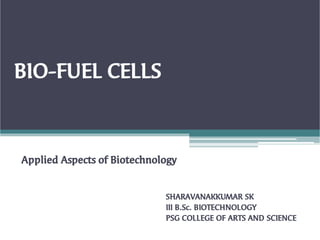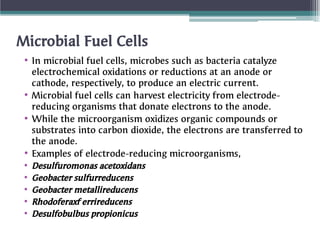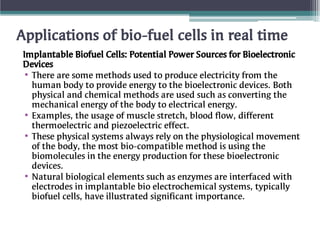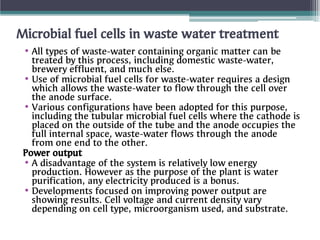The document provides an overview of biofuel cells, focusing on their electrochemical mechanisms, including microbial and enzymatic types. It explains how microbial fuel cells harness electricity through bacteria while enzymatic biofuel cells utilize enzymes for energy conversion. Additionally, it highlights applications in wastewater treatment, self-powered biosensors, and potential uses in bioelectronic devices.






























